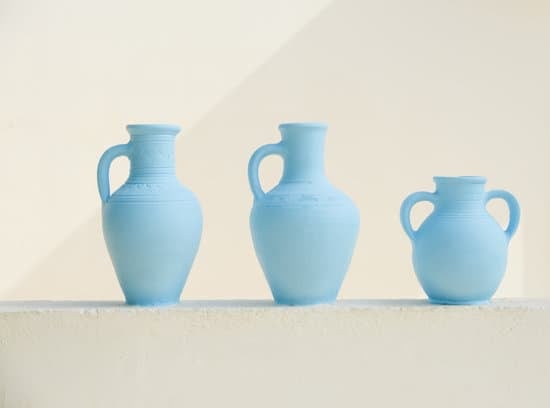Have you ever wished you could personalize and truly make your iOS 16 home screen your own? With the latest update, you now have more customization options than ever before. In this article, we will explore the exciting features and techniques that allow you to decorate your home screen in iOS 16, enhancing your overall user experience.
Personalizing your home screen goes beyond just aesthetics; it adds a sense of identity and uniqueness to your device. It allows you to create a visual representation of who you are and what you value. By incorporating elements like themes, app icons, widgets, and wallpapers, you can transform your home screen into a reflection of your personality and preferences.
The beauty of personalization lies in the endless possibilities it offers. Whether you’re a fan of minimalism, nature-inspired designs, or gaming themes, there’s something for everyone. We will discuss practical tips on how to select a theme that resonates with you and seamlessly integrate it into the overall design. So get ready to unleash your creativity as we dive into the world of decorating your iOS 16 home screen.
Understanding the New Features
iOS 16 introduces a range of new features and customization options that empower users to personalize and decorate their home screen. These enhancements not only provide aesthetic benefits but also enhance the overall user experience. Understanding these new features is essential for users who want to make the most out of their iOS 16 device and create a home screen that reflects their style and preferences.
New Widgets and App Library
One of the major additions in iOS 16 is the introduction of improved widgets and the App Library. Widgets allow users to add useful information or quick access to apps directly on their home screen. With different sizes and functionalities, widgets can provide weather updates, display calendar events, or even track health data. Users can leverage these widgets effectively to enhance both the visual appeal and functionality of their home screen.
The App Library is another feature that helps organize apps on the home screen more efficiently. By categorizing apps automatically or creating custom folders, users can declutter their home screens while still having easy access to all their apps. This feature allows for better organization and reduces the time spent searching for specific applications.
App Icon Customization
With iOS 16, users have more flexibility to customize app icons according to their design preferences. Apple provides a collection of pre-designed icons that can be applied directly from the settings menu, allowing users to instantly change the look of their app icons without downloading any additional tools or applications.
For those seeking more unique customization options, there are various apps available on the App Store that offer a wide range of custom icon packs. These packs typically include multiple designs for each app icon, allowing users to choose an aesthetic that suits their personal style. Additionally, advanced users with graphic design skills can create their own custom icons using graphic design tools like Adobe Photoshop or Canva.
Understanding these new features in iOS 16 empowers users to take control of their home screen customization journey. By incorporating widgets, organizing apps with the App Library, and customizing app icons, users have limitless possibilities to create a home screen that is visually pleasing and tailored to their individual preferences.
Setting a Theme
Choosing a theme for your home screen in iOS 16 can be an exciting and creative process. It allows you to personalize your device and make it reflect your style, interests, and personality.
Whether you prefer a minimalistic look, draw inspiration from nature, or want to showcase your love for gaming, setting a theme can enhance the overall design of your home screen. Here are some tips and ideas on how to choose a theme and integrate it effectively into your home screen design.
- Minimalistic Theme: A minimalistic theme focuses on simplicity and clean lines. Choose wallpapers with neutral colors or simple patterns to create a calm and elegant look. Organize your apps into folders or use Smart Stacks to maintain a clutter-free home screen. Consider using monochromatic app icons or icons with minimalist designs to complement the sleek aesthetic.
- Nature-Inspired Theme: If you’re drawn to the beauty of nature, consider incorporating elements like landscapes, plants, or animals into your home screen design. Choose wallpapers with breathtaking scenery or close-up shots of flowers and foliage. Use natural colors like greens, blues, and earth tones for app icons to create harmony with the background.
- Gaming-Themed Theme: For gamers or those who enjoy gaming aesthetics, a gaming-themed home screen can add a touch of fun and excitement to your device. Select dynamic wallpapers featuring game environments or iconic game characters as the backdrop for your home screen. Customize app icons with images related to your favorite games or utilize custom icon packs available in the App Store.
To integrate your chosen theme effectively into your home screen design, ensure consistency throughout all elements such as wallpaper, app icons, widgets, and shortcuts. For example, if you have chosen a minimalistic theme, opt for clean-cut widget designs that align with the simplicity of the overall aesthetic.
Experiment with different themes until you find one that resonates with you best and showcases your individuality. Remember, the goal is to create a home screen that brings joy and enhances your overall user experience with iOS 16. With a well-chosen theme, your home screen can truly become a reflection of your style and preferences.
Organizing Apps and Widgets
When it comes to organizing apps and widgets on your home screen in iOS 16, there are several techniques you can use to ensure a clean and efficient layout. Whether you’re looking to group similar apps together or optimize the placement of widgets for quick access to information, these strategies will help you create a streamlined experience.
One popular method of organizing apps is by creating folders. This allows you to group related apps together, reducing clutter and making it easier to find what you need. To create a folder, simply touch and hold an app icon until they all start wiggling.
Then, drag one app icon onto another one that you want to group together. iOS will automatically create a folder containing those apps. You can continue adding more apps to the folder by dragging them into it.
Another useful feature introduced in iOS 14 is Smart Stacks. These are dynamic stacks of widgets that automatically rotate based on your usage patterns and the time of day. Smart Stacks save space on your home screen while still providing easy access to multiple widgets.
To add a Smart Stack, press and hold on an empty area of your home screen until the app icons start jiggling. Then tap on the “+” button in the top-left corner followed by selecting “Smart Stack” from the available widget options.
Lastly, take advantage of the App Library feature introduced in iOS 14 for a more organized home screen experience. The App Library automatically categorizes your apps into intelligently named folders such as Utilities, Social, or Entertainment based on their functionality or usage patterns.
This allows you to have all your apps accessible without cluttering up your main home screens with tons of icons. Simply swipe right past your last home screen page to access the App Library and search for or browse through your apps.
By utilizing these techniques – creating folders, using Smart Stacks, and utilizing the App Library – you can ensure that your apps and widgets are organized in a way that suits your workflow and makes it easy to find what you need when you need it on your iOS 16 home screen.
Choosing App Icons
When it comes to personalizing your iOS 16 home screen, one of the most effective ways to make it unique is by modifying app icons. Fortunately, in iOS 16, there are a variety of options available for users to customize their app icons to suit their preferences and style. Whether you prefer a sleek and minimalist look or want to create a bold and vibrant theme, here are some methods you can use to modify your app icons:
- Apple’s Pre-Designed Icons: Apple provides a wide range of pre-designed app icons that you can choose from within the Settings app. To access these icons, simply go to “Settings,” then “Display & Brightness,” and select “Home Screen Layout.” From there, tap on “Icon Appearance” and choose the desired icon style. This option allows you to quickly give your home screen a fresh new look without any additional downloads.
- Custom Icons from the App Store: Another way to change your app icons is by downloading custom icon packs from the App Store. There are numerous apps available that offer a wide selection of icon sets designed specifically for iOS devices. These apps typically provide step-by-step instructions on how to apply the custom icons and may even allow you to mix and match different styles within the same theme.
- Creating Your Own Icons: For those who enjoy graphic design or have specific icon ideas in mind, creating your own icons using graphic design tools can be a fun and creative option. Popular graphic design software like Adobe Photoshop or Canva allow you to design individual icons with precise control over colors, shapes, and styles.
Once created, simply save them as image files in formats supported by iOS (e.g., PNG) and use the “Customize App Icon” feature in the Settings app to apply them to your desired apps.
| Method | Description |
|---|---|
| Apple’s Pre-Designed Icons | Select from a range of pre-designed icons available within the Settings app. |
| Custom Icons from the App Store | Download and apply custom icon packs from dedicated apps available on the App Store. |
| Creating Your Own Icons | Create personalized icons using graphic design tools like Adobe Photoshop or Canva and apply them manually. |
Take some time to explore these options and find the method that best suits your style and preferences. Remember, transforming your app icons is an easy yet impactful way to give your home screen a fresh look and make it truly yours.
Utilizing Widgets
In iOS 16, one of the most exciting features is the ability to utilize widgets on your home screen. Widgets offer a convenient way to access important information at a glance without having to open individual apps. Whether you want to stay updated on the weather conditions, keep track of your upcoming appointments, or monitor your fitness goals, widgets can provide all that and more with just a quick glance at your home screen.
To start utilizing widgets on your home screen in iOS 16, simply long-press on an empty space until the app icons start jiggling. Then tap on the “+” icon in the top left corner of the screen and scroll through the available widget options.
From here, you can select from various sizes and styles depending on your preference. For example, you can choose a small widget that displays just the date and time or opt for a larger widget that showcases your upcoming calendar events or even provides real-time updates on stocks.
Once you have selected a widget, you can customize it further by tapping on it and adjusting its settings accordingly. For instance, you can specify which calendar to display events from or choose which cities’ weather forecasts you want to see.
Additionally, iOS 16 allows you to stack multiple widgets together using Smart Stacks feature so that when you swipe through them, relevant information will be displayed based on time of day or your usage patterns. This makes it even more convenient and efficient for accessing different types of information without cluttering up your home screen.
Customizing Wallpaper
To customize your home screen on iOS 16, one of the first things you can do is change the wallpaper. The wallpaper you choose can set the tone for your entire home screen design and contribute to a visually appealing and personalized experience. Here are some step-by-step instructions on how to change the wallpaper on your iOS device:
- Access the Settings: Tap on the “Settings” app located on your home screen.
- Navigate to Wallpaper Settings: Scroll down and tap on “Wallpaper.”
- Choose Wallpaper Option: Depending on your preference, you can select either “Choose a New Wallpaper” or “Choose a New Dynamic Wallpaper.”
- Explore Wallpaper Options: Browse through the available options, including Apple’s collection of wallpapers or your own photos.
- Preview and Select: Tap on any wallpaper to preview it in both light and dark mode. Once you find a wallpaper you like, tap “Set.”
- Set Wallpaper Location: Choose whether you want to set the selected wallpaper for your home screen, lock screen, or both.
- Confirm Your Selection: Tap “Set Home Screen,” “Set Lock Screen,” or “Set Both,” depending on your choice in the previous step.
If you’re looking for stunning wallpapers specifically tailored for iOS devices, there are several websites and apps that offer a wide range of options:
- Unsplash (https://unsplash.com/): Unsplash provides high-quality wallpapers from photographers around the world, with various categories to choose from.
- Vellum (https://www.vellumapp.com/): Vellum is an app dedicated to offering unique and artful wallpapers that are updated regularly.
- Zedge (https://www.zedge.net/): Zedge is an app that not only offers wallpapers but also ringtones and notification sounds.
Remember, changing your wallpaper is just one way to personalize your home screen experience in iOS 16. Experiment with different wallpapers to find the one that best reflects your style and enhances the overall aesthetics of your device.
Adding Shortcuts
One of the exciting features in iOS 16 is the ability to create custom shortcuts on your home screen. Shortcuts allow you to perform specific actions or automate tasks with just a tap, making your device even more convenient and personalized. Whether it’s opening a favorite app, sending a text message to a specific contact, or even controlling your smart home devices, shortcuts can simplify your daily tasks and save you time.
To create a shortcut on your home screen, follow these simple steps:
- Open the Shortcuts app: The Shortcuts app comes pre-installed on iOS 16 devices. If you can’t find it on your home screen, swipe down on your device’s home screen and use the search bar to locate it.
- Create a new shortcut: Tap on “Create Shortcut” to start building a new shortcut.
- Choose an action: You’ll be presented with various options for actions you can perform with shortcuts. You can search for a specific action or browse through different categories like Apps, Home, or Communication.
- Customize your shortcut: Once you’ve chosen an action, you can further customize it by adding parameters or adjusting settings according to your preferences.
- Name and add an icon: Give your shortcut a name that reflects its purpose and choose an icon that represents it visually.
- Add to home screen: Finally, tap on “Add to Home Screen” to place the shortcut on your device’s main screen.
By incorporating shortcuts into your home screen design, you can streamline common tasks and access important functions more efficiently than ever before. Whether it’s creating a shortcut for instantly accessing your favorite playlist or automating a series of actions before going to bed each night, shortcuts empower users to tailor their iOS experience according to their unique needs.
| Action | Description |
|---|---|
| Open Spotify Playlist | Directly opens a specific playlist on the Spotify app. |
| Send ETA Message | Sends an automated message with your estimated time of arrival to a selected contact. |
| Turn Off Lights | Controls smart home devices and turns off all lights in the house. |
Get creative and think about the tasks you frequently perform on your device. With shortcuts, you can streamline these actions and make your iOS experience even more personalized and efficient. Don’t hesitate to explore the possibilities and experiment with different shortcuts to truly customize your home screen in iOS 16.
Sharing and Discovering Home Screen Designs
With the release of iOS 16, Apple has introduced exciting new features and customization options that allow users to personalize their home screen like never before. One of the best ways to enhance your experience with iOS 16 is to share and discover home screen designs created by others.
By sharing your personalized home screen designs on social media platforms or participating in online communities dedicated to iOS customization, you can not only showcase your creativity but also gain inspiration and ideas from other users.
Social media platforms such as Instagram, Twitter, and TikTok have become a hub for individuals to showcase their unique home screen designs using various themes, wallpapers, app icons, and widgets. These platforms provide an opportunity for users to share screenshots or short videos of their customized home screens while also discussing the techniques and tools they used to achieve their desired look.
By following accounts that specialize in iOS customization or using hashtags related to iOS 16 design trends, you can quickly discover innovative ideas that can transform your own home screen.
In addition to social media platforms, there are numerous online communities dedicated specifically to iOS customization where users can discuss different design techniques, ask for help or feedback on their creations, and even participate in challenges or contests. These communities often have forums or threads where individuals can share screenshots of their home screens and engage in discussions about various aspects of customization.
Participating in these communities not only allows you to learn from experienced users but also provides a sense of camaraderie as you connect with fellow enthusiasts who share your passion for creating unique home screen designs.
Sharing and discovering home screen designs on social media platforms and online communities is not just about aesthetics; it is also about exploring the possibilities and pushing the boundaries of what is possible with iOS 16. By exchanging ideas with others who are equally enthusiastic about customizing their devices, you can unlock new techniques, uncover hidden features in iOS 16, and stay informed about updates and trends in the world of iOS customization.
So don’t hesitate to share your creations and dive into the vibrant community of iOS enthusiasts who are constantly reimagining their home screens.
Conclusion
In conclusion, decorating the home screen in iOS 16 offers numerous benefits and opportunities for users to enhance their overall experience with their devices. By personalizing the home screen, users can create a truly unique and reflective interface that aligns with their personality and preferences. This level of customization allows for a more enjoyable and tailored user experience.
One of the major advantages of decorating the home screen is the ability to set a theme. Whether it be minimalistic, nature-inspired, or gaming-themed, choosing a theme adds cohesiveness and aesthetic appeal to the overall design. Additionally, organizing apps and widgets on the home screen helps streamline navigation and access to frequently used applications, ultimately improving efficiency.
Furthermore, modifying app icons and utilizing widgets are other ways to make the home screen visually appealing while adding functional elements. Users can choose from Apple’s pre-designed icons or download custom icons from the App Store to give their device a distinct look. Widgets provide useful information at a glance, such as weather updates or calendar events, further enhancing productivity.
Lastly, sharing personalized home screen designs on social media platforms or participating in online communities dedicated to iOS customization can inspire others while providing new ideas for further creativity. By engaging with like-minded individuals, users can discover new ways to personalize their own devices while finding inspiration from others.
Frequently Asked Questions
How do I customize my iPhone home screen iOS 16?
To customize your iPhone home screen on iOS 16, you can start by choosing a new wallpaper. Go to the Settings app and tap on “Wallpaper.” From there, you can select a new background image from the default options or choose a photo from your gallery. Additionally, with the introduction of iOS 14, you can now add widgets to your home screen.
Long-press on any empty space on your home screen until the apps start shaking, then tap the “+” button at the top-left corner. This will bring up the widget gallery where you can select and add different widgets in various sizes. You can even stack widgets together for more customization options.
How to decorate iOS 16 lock screen?
Decorating your iOS 16 lock screen is relatively simple yet effective in personalizing your device’s look and feel. Begin by going to Settings and tapping on “Wallpaper.” Here, you can choose a lock screen wallpaper that resonates with your style preference or matches your overall aesthetic theme.
Moreover, iOS offers dynamic wallpapers that subtly change appearance based on factors like time or battery level. Consider enabling notifications to appear on the lock screen as well, allowing you to quickly glance at important information without unlocking your device.
How do I decorate my apps on iOS 16?
When it comes to decorating apps on iOS 16, there are several ways to make them visually appealing and organized according to your preferences. Start by organizing them into folders for easier access. To create a folder, simply long-press an app icon until it starts shaking and then drag it onto another app icon that you want to group together. You can name these folders based on categories or themes (e.g., Social Media, Photography).
Additionally, Apple introduced App Library with iOS 14 which automatically organizes all installed apps into categorized folders making it easier to find what you need without cluttering up your home screens. Moreover, consider customizing app icons by using Shortcuts app which allows you to create shortcuts with personalized icons for your apps and place them on your home screen. Simply open the Shortcuts app, create a new shortcut, select the app you want to customize, tap the three dots in the top-right corner, choose “Add to Home Screen,” and then select a custom image for that app’s icon. This way, you can have a cohesive look and feel across your home screen with customized icons.

Hello, lovely readers! I’m Sheila Collins, and I’m delighted to be your trusted guide on this exciting journey of home improvement, design, and lifestyle. As the founder and editor-in-chief of Home Guide Blog, I’m passionate about all things related to homes, and I’m here to share my knowledge, experiences, and insights with you.





